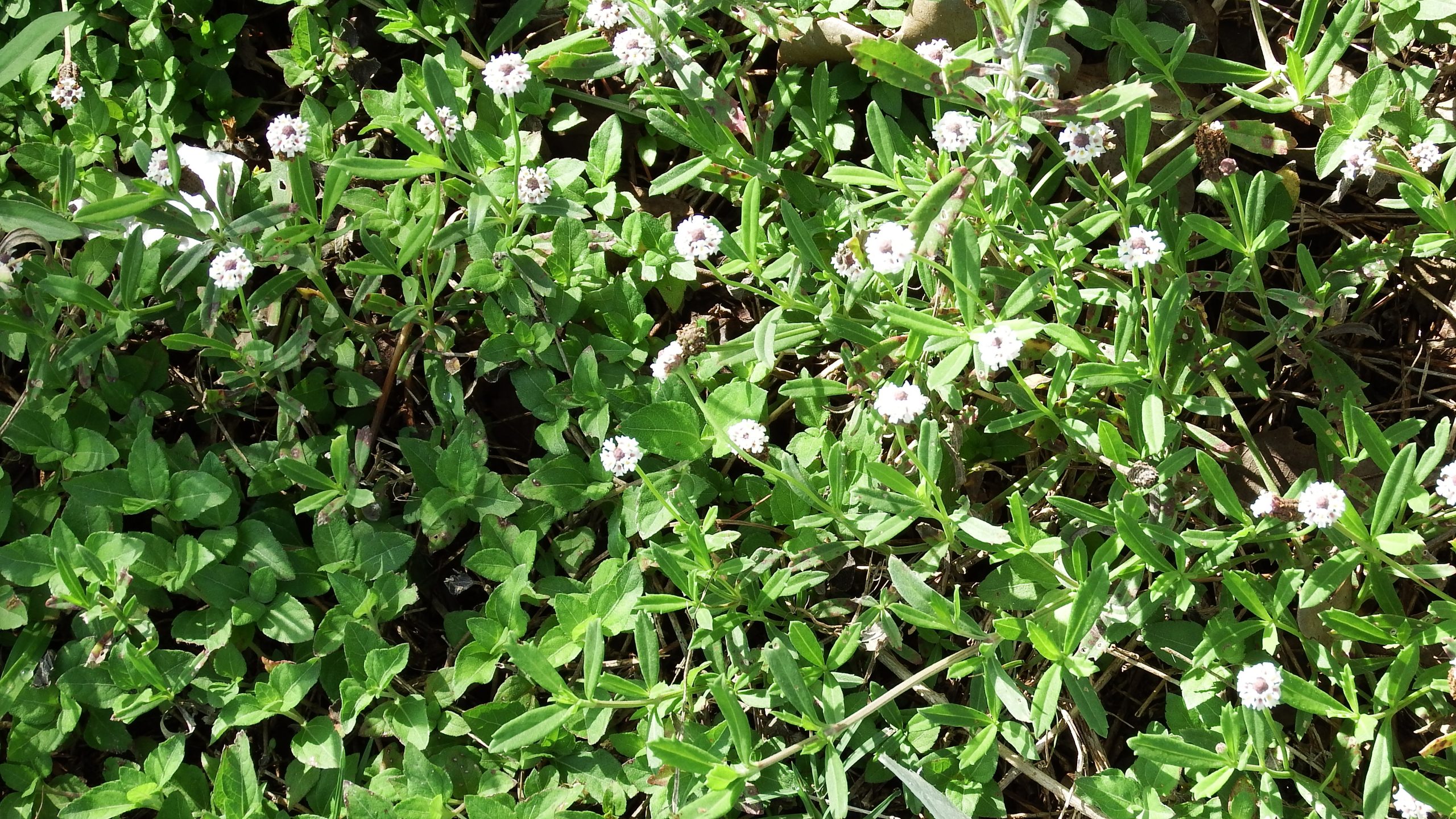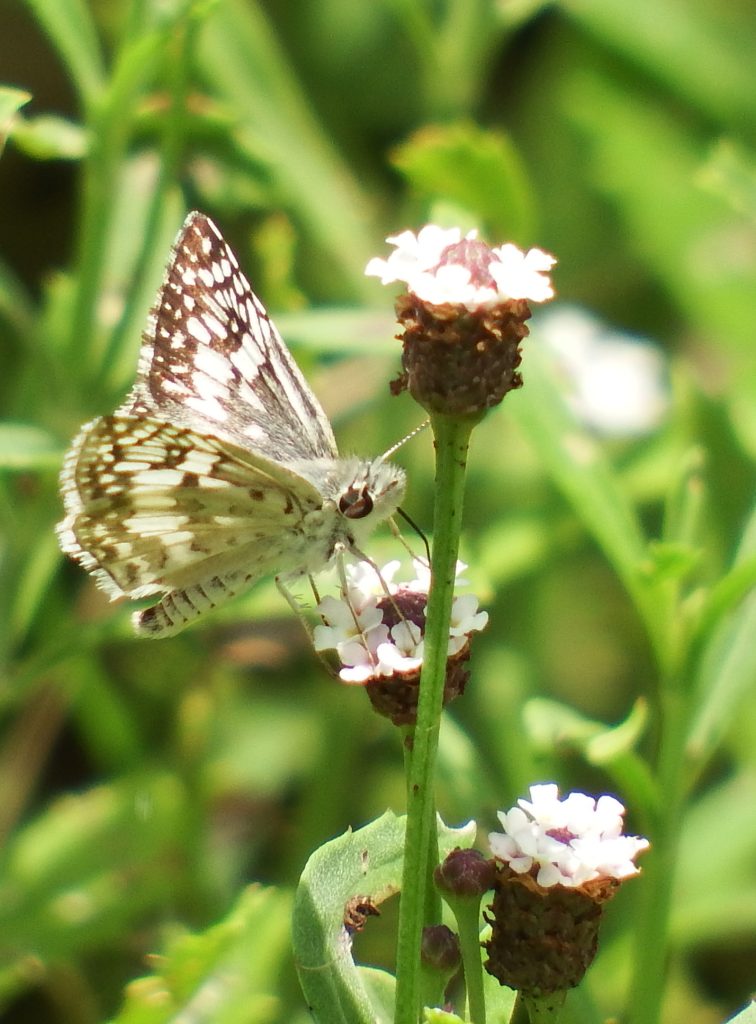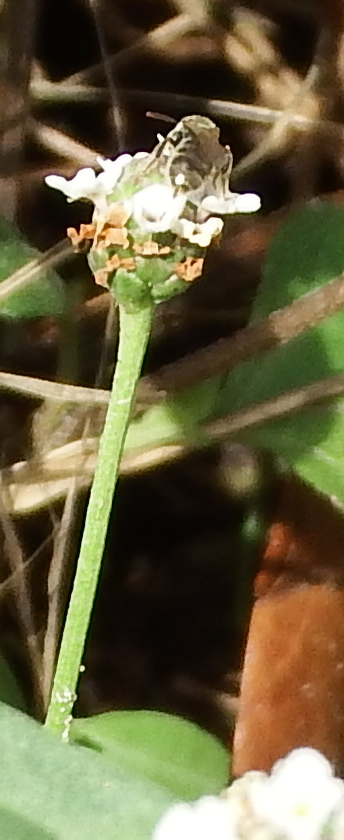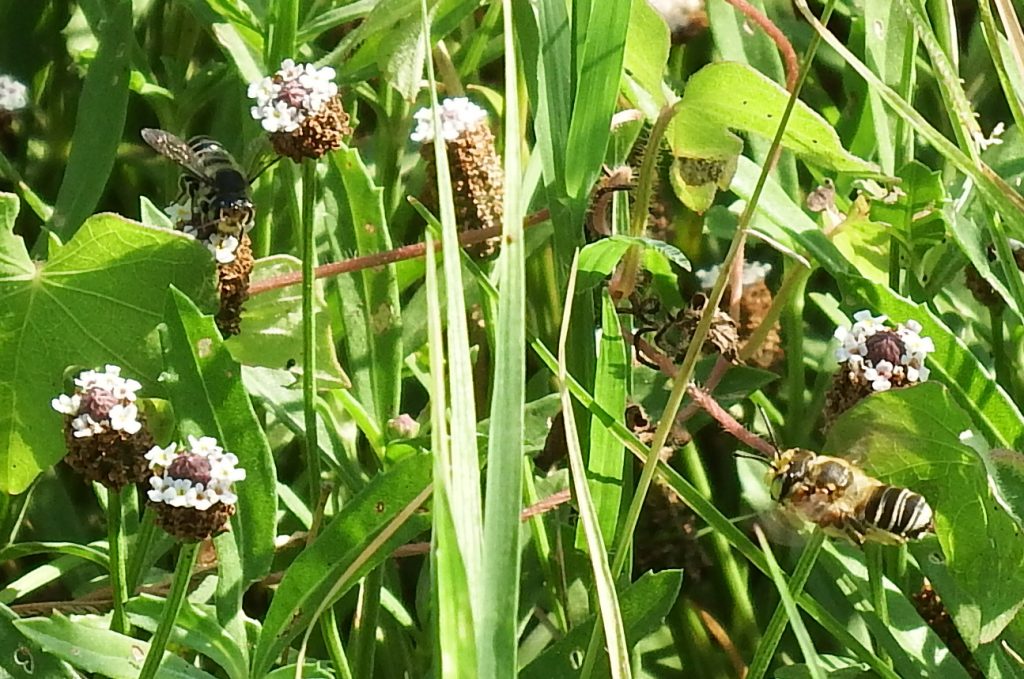Frog Fruit

Each blog post begins with a walk. If nothing jumps out at me, or crawls up to me, or flies over me, I look for the nearest patch of frog fruit and stay for a while, something will always happen.
But this blog is also driven by photography and I have never managed to get a photo worth centering a blog post around by watching frog fruit. This isn’t because nothing happens around frog fruit. Everything happens around frog fruit. But another of frog fruit’s common names is match-head. This is a clue to the size of each flower. Frog fruit is tiny. Teeny tiny. This makes it that much more amazing that if you want to watch native bees and butterflies, I can’t think of a better place to hang out than near frog fruit.
So, photos be damned! This post is about frog fruit.

Checkered Skipper on frog fruit
First, that name. Frog fruit has nothing to do with frogs. It does have to do with how language changes over time. In the Middle Ages, farmers knew that after they hayed their meadows, low-growing plants would pop up. Because meadows often have fog on them in the mornings, these low-growing plants were collectively known as “fog fruit.” We played telephone with that one for hundreds of years until fog fruit morphed into frog fruit. And this is why we always try to use Latin names. Frog Fruit is phyla nodiflora. It is a type of verbena. It is also called match head, turkey tangle, and, still, fog fruit.
It is a mighty nectar source, as demonstrated by the constant attention it gets from bees and butterflies. But it is perhaps, not a great producer of pollen. One of the few scholarly articles about it I could find noted that it doesn’t seed abundantly and that most colonies are simply clones of the same plant. A study of pollen take by bees found frog fruit to be low on the pollen scale.

Tiny insect (possibly a native bee) on frog fruit
Frog fruit can be found everywhere in the southern half of the U.S. and throughout Central America and the warmer parts of South America and it is a superb ground cover. In every section of the Park, you can find frog fruit just by paying attention.
Someone named Bailey sang its praises in 1922:
It thrives in any soil, no matter how poor, rapidly covering the ground with a very dense matting. It will smother all weeds in a short time, and the more trodden upon the better it grows. It requires much less water than other lawn plants… It will stand severe heat and many degrees of cold, and can easily be established in sloping grounds. It will never be difficult to eradicate, having no underground runners… it seeds very sparingly or not at all.
In other words, it puts your lawn to shame.
From an environmental point of view, a lawn is a net negative. No one is allowed to eat it (we will kill anything that tries), and we use lots of chemicals to suppress anything that wants to grow amidst it. A lawn is a desert that nothing lives on. Frog fruit, however, is an environmental hotbed providing food for multitudes of hungry bees and butterflies. It is a host to the caterpillars of both Phaeon Crescent Butterflies and Buckeye Butterflies. It’s also rather nice looking.
You might imagine this is building up to a call for everyone to get rid of their lawn and embrace frog fruit. It would be, except there are almost no commercial sources for seed and only a few for the plant itself. But it is also everywhere. The next time I find some in an abandoned area, (most definitely not our Park), it is going home with me! Don’t tell anyone.

Two native bees on frog fruit. They might be a little hard to find, look top left and bottom right.

